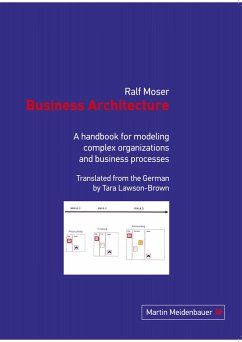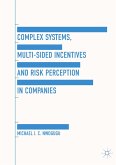These days it is clear that the process of industrialization also includes the area of business financials. Many ERP solutions are not prepared for this process. If we analyze the problem in more detail, we can see that the construction problem of complex organizations has not yet been taken into consideration, and that the current handling of business architecture does not meet our requirements.
To consider the construction problem of complex organizations, there are many questions that need to be asked and to be answered. This book looks at this task, and answers the following questions:
-"Why should we look into business architecture?"-"How can we structure the overall field of business architecture?"-"How can we structure business processes?"-"What is a company's overall architecture, and what parts of a company are relevant to that architecture?"-"What can I use the architectural structures of a company for, and what do I gain by using them?"-"What can we hope to gain by developing business architecture?
The process of answering these questions does not only consider the construction problem of complex organizations, but also develops a planning and description standard for business architecture. The description standards for municipal and architectural planning are used as an example for the business world. These standards enable us to represent planning almost completely without technology. Drafts created in this way do not become obsolete as technology progresses, but at best, only as architecture does so. Technology becomes obsolete every ten years in our modern times, whereas good architecture is measured in hundreds of years.
Hinweis: Dieser Artikel kann nur an eine deutsche Lieferadresse ausgeliefert werden.
To consider the construction problem of complex organizations, there are many questions that need to be asked and to be answered. This book looks at this task, and answers the following questions:
-"Why should we look into business architecture?"-"How can we structure the overall field of business architecture?"-"How can we structure business processes?"-"What is a company's overall architecture, and what parts of a company are relevant to that architecture?"-"What can I use the architectural structures of a company for, and what do I gain by using them?"-"What can we hope to gain by developing business architecture?
The process of answering these questions does not only consider the construction problem of complex organizations, but also develops a planning and description standard for business architecture. The description standards for municipal and architectural planning are used as an example for the business world. These standards enable us to represent planning almost completely without technology. Drafts created in this way do not become obsolete as technology progresses, but at best, only as architecture does so. Technology becomes obsolete every ten years in our modern times, whereas good architecture is measured in hundreds of years.
Hinweis: Dieser Artikel kann nur an eine deutsche Lieferadresse ausgeliefert werden.







